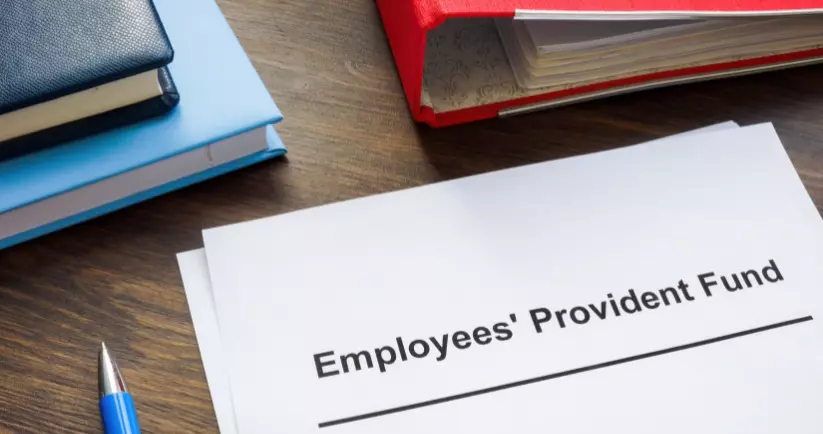PF is the acronym for Provident Fund. It is mainly an investment scheme for salaried employees, who invest in the fund to acquire the benefits after retirement. It is government-maintained retirement savings managed by the Employee Provident Fund Organization (EPFO) for salaried employees.
The EPF retirement scheme was passed in 1952 for the first time by the Indian Government under the Employees Provident Fund and Miscellaneous Act, of 1952.
As per the act, employees and employers should pay an equal contribution to the scheme monthly basis. If a company has a minimum of 20 or more employees would be availed for getting benefits for the provident fund. The Employee Provident Fund Organization (EPFO) is allotted a Universal Account Number i.e. UAN to the employee.
The PF account and universal account number (UAN) are connected and valid till the employee’s life. In fact, employees can easily switch their PF accounts when they change their jobs.
What is PF (Provident Fund)?
A Provident Fund (PF) is a financial savings scheme typically sponsored and managed by the government or an employer to help employees save for their retirement or other long-term financial goals. As per the Employees’ Provident Fund Act, both the employees and employers contribute 12.8% to the fund, and an employee gets the interest rate on the principal amount as an extra add-on after retirement.
➔ What else do the employees earn as add-ons saving money in the Employee’s Provident Fund?
Employees get the interest amount, reflected on the principal amount during the retirement time period. In 2023 the recent interest rate of EPF is fixed at 8.15%. We can say that it is an attractive plan for the salaried employees of the private sector.
In this blog, we are going to talk about the queries that come randomly to your mind whether you come across the term EPF for the first time or you have been investing for several years.
Also Read:
What are the benefits of the provident fund?
To be a private salaried employee, it is essential to open an employee provident fund for better future savings. Here are details of the benefits of having an employee provident fund.
➔ Future Income
Employees save money for future expenses. It helps employees during financial emergencies.
➔ Manageable deduction
Instead of spending a bulk amount, the employees can invest a small amount every month. Making small investments monthly helps save a huge amount over a long period of time.
➔ Interest Earnings
The Government sets a competitive rate of interest on every EPF account. This interest rate is typically higher than what is offered by regular savings accounts or fixed deposits in banks.
➔ Liquidity for Emergencies
During certain emergencies, employees can use the fund as financial assistance during unexpected situations.
➔ Compliance with Labor Laws
Besides, employees’ employers get the benefits as well. Labour law contributes to the EPF for eligible employees as per the Employees’ Provident Funds and Miscellaneous Provisions Act, 1952. Non-compliance can result in legal penalties.
What are the PF Eligibility Criteria in India?
The Employees’ Provident Fund (EPF) scheme in India is a retirement savings program designed to provide financial security to employees during their post-employment years. Eligibility for EPF is determined by various factors, organization types, Age limit, Salary limit, EPF account acceptance, nature of employment, etc.
➔ Organization Types
The organization plans for EPF integration for employees, should have establishments with 20 or more employees. However, organizations with fewer than 20 employees can get voluntary EPF contributions for employees.
➔ Age Limit
There is no specific age limit for EPF eligibility. Employees of all ages can contribute to the EPF as long as they meet the other eligibility criteria.
➔ Salary Limit
As of my knowledge cutoff date in September 2021, EPF is mandatory for employees earning a basic salary (including dearness allowance) of up to ₹15,000 per month.
➔ EPF Account Acceptance
In India, The employee provident fund is applicable to the entire country except Jammu and Kashmir.
➔ Nature of Employment
EPF is applicable to various types of employment, including permanent, temporary, contractual, and part-time work. It covers both Indian and expatriate employees working in covered establishments.
The Employee provident fund contribution
Both the employers and employees contribute to the employee provident fund every month. The contribution to the employee provident fund is equal. If the employee’s monthly income is more than 15000, the EPF contribution must be distributed Likewise,
| Employee contribution | Employer contribution | Total |
| 12% | 12%/ 10% | 24% |
➔ Employees’ salaries less than ₹15000
Here is the distribution Provident Fund (EPF) and the Employee’s Pension Scheme (EPS) of employees whose monthly salary is less than ₹15000,
| Employee contribution to EPF | Employer contribution to EPF | Employer contribution to EPS |
| 12% | 3.67% | 8.33% |
Objectives Employee Provident Fund Contribution
- Employee’s total contribution is split between the employee pension scheme and employee provident fund.
- Out of 12 % from the employee side, 8.33 % contributed as EPS and 3.67 % as EPF as an employee contribution
- The EPF passbook is updated with all monthly donations.
- Employees whose salary is less than 15000, Instead of PF, can contribute in the ESS portal.
- Aside from the contribution, employees must contribute an extra 0.5 % of the salary as EDLI. Employers have to contribute charges of 1.1% and 0.01 % as EDLI and EPF.
How to check my PF account balance?
Are you thinking about how to check your PF balances? If you have a PF account then you must have a UAN number that helps you check and review the PF account balance. Here are the following steps,
➔ PF checking Through Website Login
- Visit the EPFO website
- Enter the UAN number and Password (In case you forget your password, click on ‘forget my password’.)
- View and download the current EPF statement
➔ PF check by sending an SMS
If in case your internet is not working or You just want to check your balance via SMS
SMS at 7738299899 from your registered mobile number by typing ‘EPFOHO UAN’.
➔ PF balance check using the Umang or EPFO application
Here is how you securely check your provident fund balance using the Umang application, it is a government-registered application for checking and analyzing employee provident fund balance.
- Download the Umang application through ‘The Play Store’
- After downloading the application, click on a member and then go to ‘balance/passbook’
- Enter your UAN registered mobile number, the system will verify the mobile number. After verification is done, you can get to check and download your PF balance in PDF format.
How to withdraw the entire PF amount?
The Provident fund EPF savings is a long-term investment made by the employer, the employee, and in some cases by the government. An employee at the time of retirement can withdraw the total amount he/she has invested over the years.
However, there are certain conditions that an employee has to follow to withdraw the money from the EPF scheme.
➔ Claiming PF amount for Housing Loan
- The eligibility of claiming the PF amount for a housing loan is a minimum of 60 months of service.
- The withdrawal limit is up to 3 years of employee basic and DA. However, the employers can share the total cost of the house.
➔ Claiming PF for Marriage
- The eligibility of claiming PF for marriage would be a minimum of 84 months of service.
- The claim amount would be a maximum of 50 % of the PF amount.
➔ Claiming PF one year before retirement
- The age of the claiming person or account holder should be above 54 years of age.
- The claiming person can withdraw up to 90 % of the entire PF amount.
➔ Medical Expenses
- There is no medical service tenure for medical expenses.
- The claiming person can withdraw up to 6 months of his basic salary and DA of the entire contribution in requirement.
Employees can keep check of their PF balance with the help of several Apps
Are there any restrictions on the withdrawal of EPF?
Employees can withdraw a certain amount from the provident fund. The withdrawal can be claimed online or offline. In the case of online, it is reflected within 3 days while claiming offline takes more than 20 days. We are sharing some restrictions you must know at the time of PF withdrawal.
➔ Here are 5 important restrictions about EPF withdrawal:
- Like withdrawing from the bank account, you cannot withdraw money from your FPF account
- EPF amount can be withdrawn entirely if the account holder becomes unemployed before retirement.
- EPF account holder should his unemployment at the time withdraw EPF amount.
- During unemployment, the account holder can withdraw a maximum of 75 % of the entire amount, and the remaining 25% will be transferred to the new account after rejoining.
- Withdrawal of the EPF amount can be available after 1 month of unemployment.
Can an employee transfer the PF account in case of a change in employment?
Yes, you can definitely transfer your PF account at the time of the Job change. But you have to go through a thorough process. Here is how the process happens offline and online.
➔ Offline technique
- Every employee who contributes money to EPF has a unique UAN. You have to submit the Universal Account Number (UAN) to your new employer.
- Employers link your UAN number with the new PF account. Your previous employer might need to approve the PF transfer request.
- Once the approval is done, the EPFO transfers the PF balance from the old PF account to the new one.
- Employees continue making PF contributions through their new employer, and the transferred amount gets added to the new PF account.
➔ Online technique
- Employees can initiate the transfer of their PF balance to the current employer’s PF account through the EPFO’s online portal. This online transfer is known as the “online PF transfer claim.”
- In case of online PF transfer, you have to fill the FORM 13 (an application form for transferring the PF accumulation)
- During the online transfer process, after the commencement of the transfer request, previous employers verify and authorize PF transfer requests.
- After verification and approval from the previous employer, the EPFO transfers the PF balance from the old PF account to the new one.
- It takes two to three weeks, and then the employee can again invest in EPF.
Whether it is an online process or offline, EPF takes care of the interest rate. During the transaction process, the interest rate remains the same and constant.










